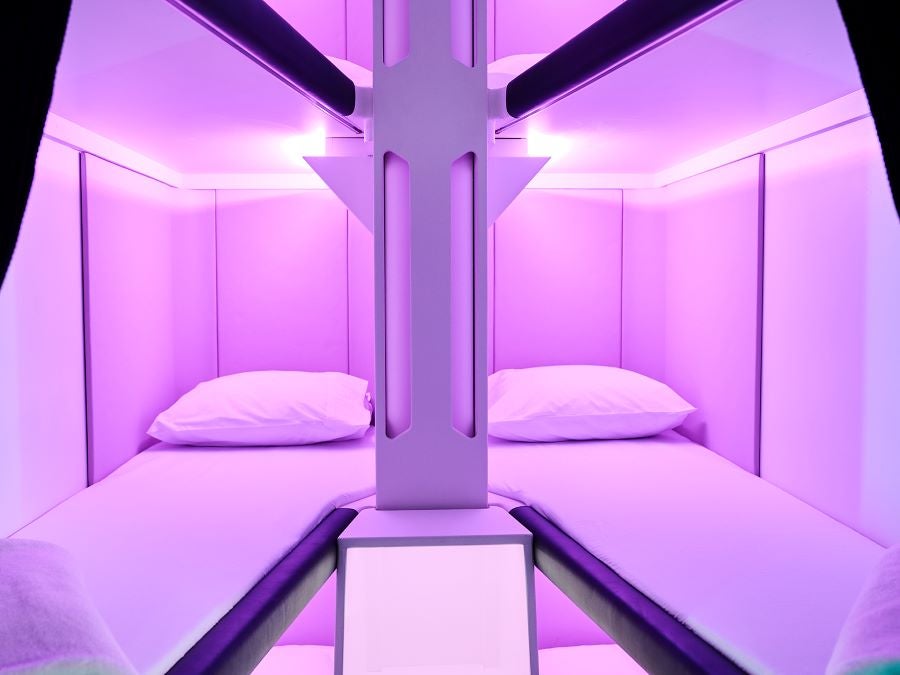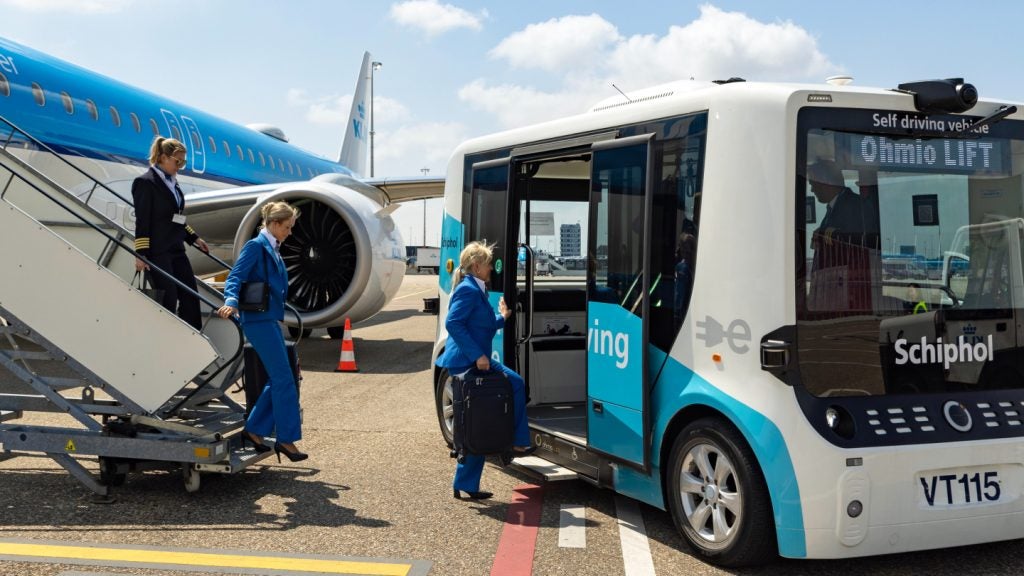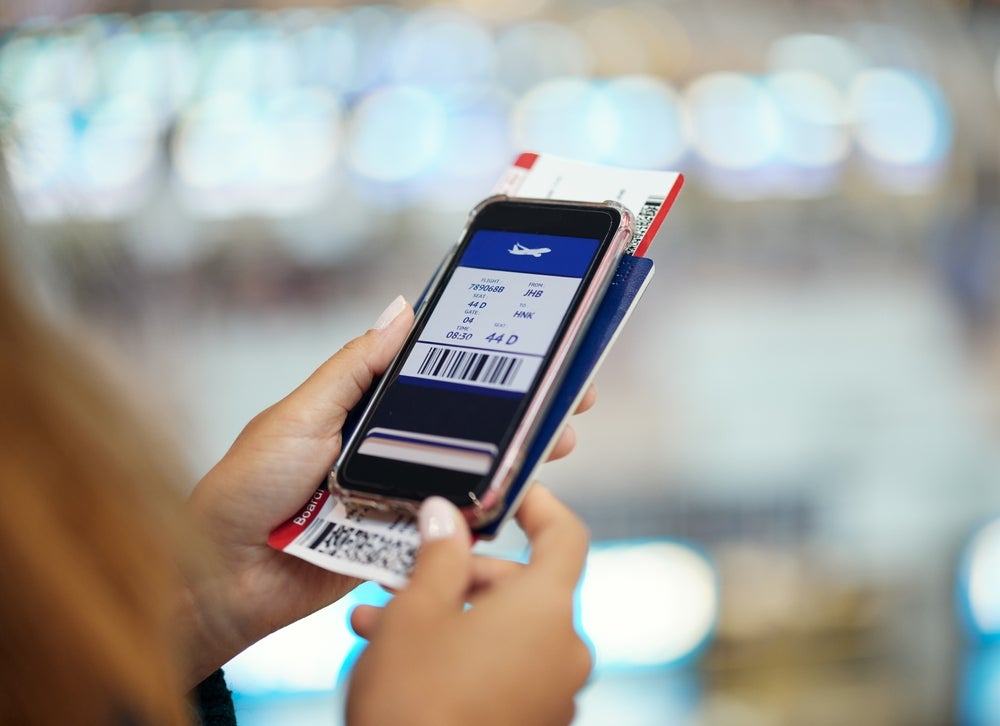
Economy Skynest, to be introduced in 2024, will provide Air New Zealand passengers with a lie-flat option for long-haul flights. The pods include a full-size pillow, sheets and blanket, ear plugs and lighting designed for rest as well as a separate reading light, personal device USB outlet and a ventilation outlet.
Leanne Geraghty, Air New Zealand chief customer and sales officer, says: “Research shows us the first night away from home is the hardest to get a good night’s sleep so everything we do onboard is to help create a sense of calm – from the lighting and sleep ritual including sleepy teas and balms, to the healthier food choices and breathable fabrics.
“Meditative onscreen content, Zentertainment, will also help customers unwind and get ready for rest.”
Feedback from customer research, gathered over five years has highlighted customer interest in getting a good night’s sleep on their journey as well as the need for more space and comfort.
The length has been measured at around 203cm (80 inches) while width at the shoulder is around 58.4cm (23 inches). Although there is no in-flight entertainment within the pod, passengers can bring their own device and headphones.
Geraghty says: “New Zealand’s location puts us in a unique position to lead on the ultra-long haul travel experience.
How well do you really know your competitors?
Access the most comprehensive Company Profiles on the market, powered by GlobalData. Save hours of research. Gain competitive edge.

Thank you!
Your download email will arrive shortly
Not ready to buy yet? Download a free sample
We are confident about the unique quality of our Company Profiles. However, we want you to make the most beneficial decision for your business, so we offer a free sample that you can download by submitting the below form
By GlobalData“We have zeroed in on sleep, comfort, and wellness because we know how important it is for our customers to arrive well-rested. Whether they are heading straight into a meeting, or to their first holiday hotspot – they want to hit the ground running.”
As a result, the eight Boeing 787-9 Dreamliners and retrofitted current 787-9 fleet will have either eight or four Business Premier Luxe seats, 42 or 22 Business Premier, 52 or 33 Premium Economy, 125 or 213 Economy seats, and six Skynest sleep pods on long-haul flights.
Geraghty says: “When our new Dreamliners arrive from 2024, we will give customers more choices than any airline in the world, with a suite of seven seat experiences.
“But it isn’t just about a seat, it’s the whole flying experience. Air New Zealand has an ambition to create the greatest flying experience on Earth and we believe the new cabin, combined with world leading Kiwi hospitality, is the winning formula.”
Elsewhere, Air New Zealand has added a Sky Pantry to the Premium Economy and Economy cabins for passengers to eat and drink when they want to.
The cabin’s interior design is inspired by the country including the forest inspired carpet to seats drawing inspiration from New Zealand’s native bird, the Tui.
Sustainability has also been a key consideration in the design process. In economy, the new serviceware is expected to reduce plastic dishes that are used inflight by 28 million units each year.
Elsewhere, and modern fabrics have been used instead of leather which has saved around 1kg in weight per Business Premier and Premium Economy seats. Overall carbon emissions have been lowered as a result. In addition, premium cabins will switch to servicewear that is 20% lighter.
“This has never been done before so has required a lot of innovation, design and engineering. Real innovation comes in solving issues around viability and feasibility. It’s going to be a real game changer, adding more flexibility to the economy travel experience,” says Geraghty.
Air New Zealand is working on a booking system that will allow its passengers to book four-hour sessions in the sleep pods on their long-haul flights and the cost of the bookings are still being considered. Due to the expected popularity of this feature, passengers can only book one session per flight.







